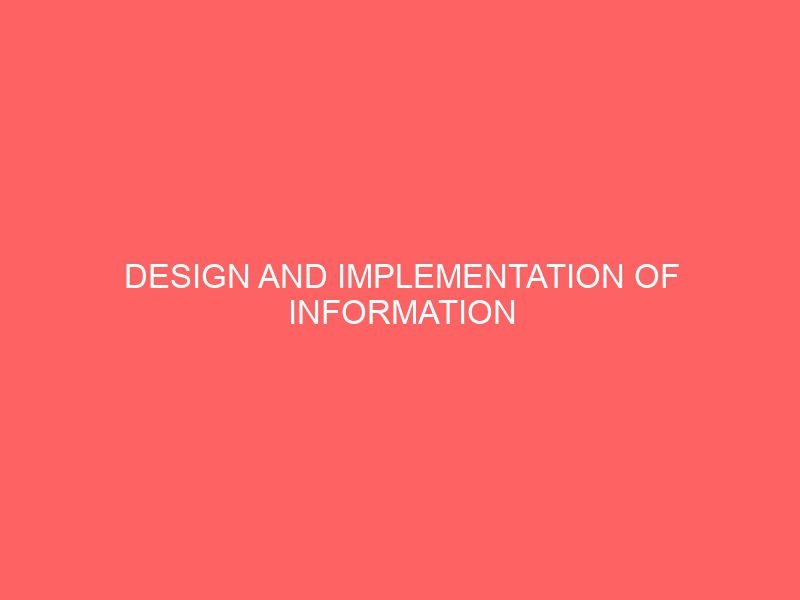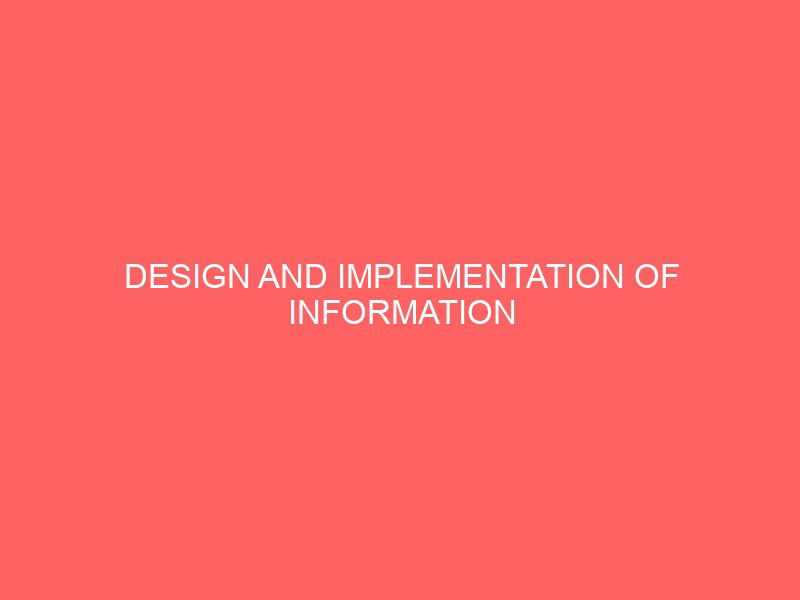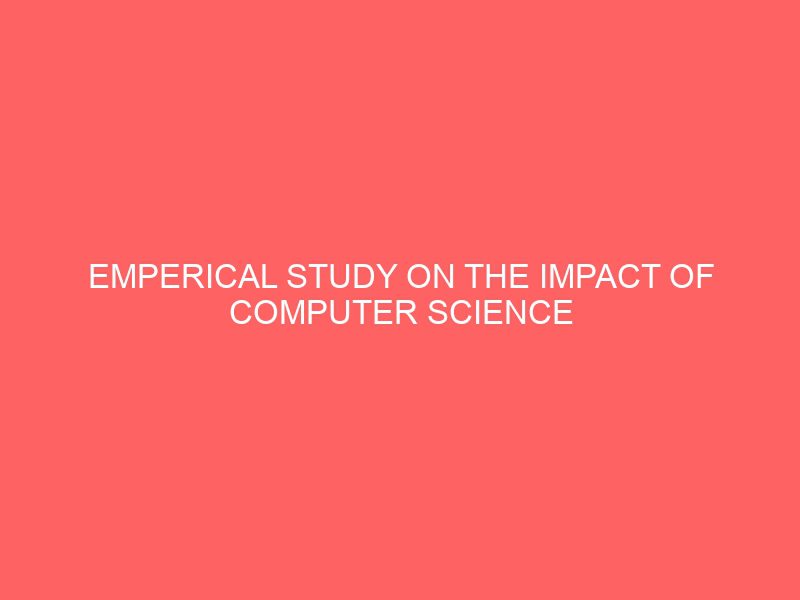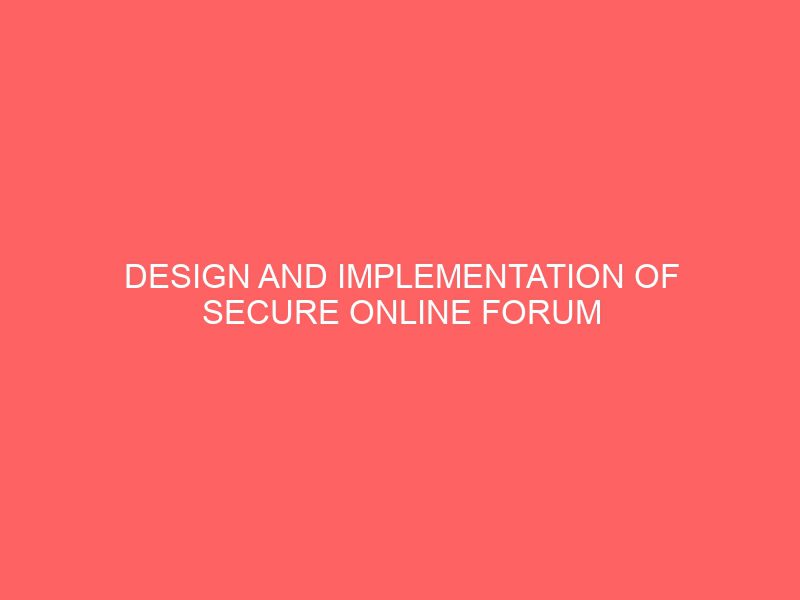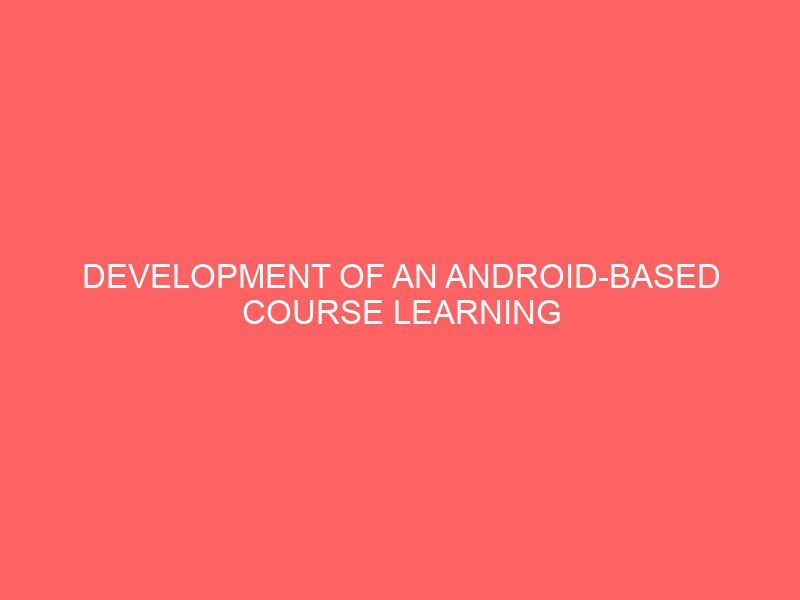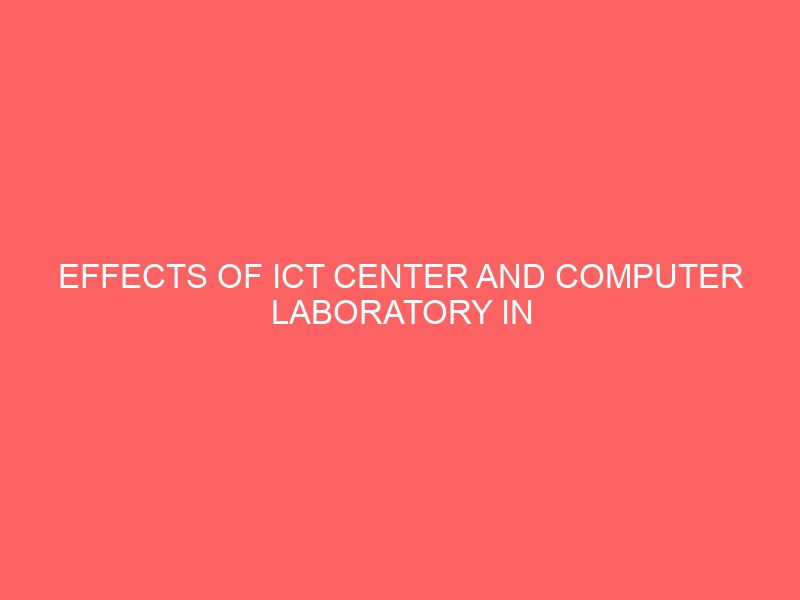DESIGN AND IMPLEMENTATION OF INFORMATION MANAGEMENT SYSTEM FOR COMPUTER SCIENCE DEPARTMENT
ABSTRACT
This project research is on
Design and implementation of information management system for computer science department. The system is named CSDSIMS, an acronym for Computer Science Department Students Information Management System. It is developed and compiled using the Visual Basic programming language, and on Microsoft .NET Framework version 4.5 under a Windows platform. The research work includes a critical self-reflective commentary on Schools information management system.
CHAPTER ONE
1.0 INTRODUCTION
Information systems have become the backbone of most organizations. Banks could not process payments, governments could not collect taxes, hospitals could not treat patients, and supermarkets could not stock their shelves without the support of information systems. In almost every sector education, finance, government, health care, manufacturing, and businesses large and small information systems play a prominent role. Every day work, communication, information gathering, and decision making all rely on information technology IT. When we visit a travel agency to book a trip, a collection of interconnected information systems is used for checking the availability of flights and hotels and for booking them. When we make an electronic payment, we interact with the banks information system rather than with personnel of the bank.
Modern supermarkets use IT to track the stock based on incoming shipments and the sales that are recorded at cash registers. Most companies and institutions rely heavily on their information systems. Organizations such as banks, online travel agencies, tax authorities, and electronic bookshops can be seen as IT companies given the central role of their information systems.
Information Management System IMS is a general term for software designed to facilitate the storage, organization and retrieval of information.
IMS is also the name of IBMs mammoth software program developed in the 1960s to support NASAs Apollo space program. This IMS version was the precursor to IBMs premier hierarchical database management system DBMS.
Electronic document and records management system EDRMS is a type of content management system and refers to the combined technologies of document management and records management systems as an integrated system.
Unlike DB2 IBMs relational database software, an IMS database uses segments, or data blocks, as building blocks of the hierarchical model. Within each segment are multiple data pieces, which are known as fields. At the top of the hierarchy, the segment is known as the root segment. Segments of a specific segment are known as child segments. The child segment order represents the order in which each entry is entered in a database.
Hierarchical IMS databases generally come in three forms:
1.Full function database: Derived from the Data Language Interface DL/I, this database form may have more than one single access method. Overflow Sequential Access Method OSAM or Virtual Storage Access Method VSAM may be used to store and access database fields.
2.Fast path database: Designed to facilitate an optimum transaction rate. Examples are data entry databases DEDB and main storage databases MSDB.
3.High availability large databases HALDB: Handles large volumes of data and provides reliable availability for each piece of data in the database.
IMS Information Management System is a database and transaction management system that was first introduced by IBM in 1968. Since then, IMS has gone through many changes in adapting to new programming tools and environments. IMS is one of two major legacy database and transaction management subsystems from IBM that run on mainframe MVS now z/OS systems. The other is CICS. It is claimed that, historically, application programs that use either or both IMS or CICS services have handled and continue to handle most of the worlds banking, insurance, and order entry transactions.
1.1 BACKGROUND OF THE STUDY
Paper-based Information management system are rapidly becoming outdated. They are easily lost, are subject to wear and tear, are costly to handle, cannot be transferred electronically, may be difficult to interpret, and are inefficient. These fundamental drawbacks are driving a transition across the globe towards Electronic Health Records EHRs.
This research work offers a practical solution using cryptography to protect these sensitive electronic records of students in Federal Polytechnic Gboko, Benue State and gives them privacy control over who views their records, details and every other sensitive information in other units of the school.
1.2 STATEMENT OF THE PROBLEM
Computer science department of Fidei poly is to an extent manually operated and manage records and data. The recording of students admitted and their activities are done manually in a book, which looks/appears rough. Thus, the books or files are exposed to physical damage by ants and pests, accumulation of dust particles; this makes the contents to be lost, misplaced or even altered.
1.3 PURPOSE OF THE STUDY
The purpose of this study is to develop software that can be used in information management system students received with its activities. Also to promote efficient and quality of services to individuals
1.Capture the basic data in the departmental unit of Federal Polytechnic Gboko: where students can view their file.
2.Protect sensitive information at the various department using user login security and triple DES encryption method there by assigning unique decryption key for each user which works when.





